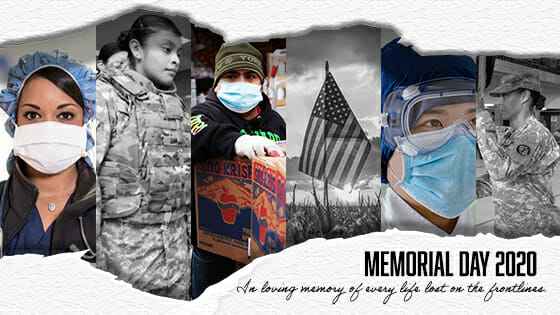From AAMC Reporter: June 2014
… at the University of Michigan Medical School in Ann Arbor, the Office for Health Equity and Inclusion was established in 2013 to try new approaches to mitigate health disparities. Among those, the office is looking at ways to inspire people of all races and nationalities to consider health care as a career. While anyone can learn to be sensitive to other races and cultures, according to Carmen Green, M.D., associate vice president and associate dean for Health Equity and Inclusion, research has shown that patients might be more likely to open up with doctors who come from similar backgrounds.
And the doctors, likewise, may ask different questions, or even phrase questions differently. “There are a lot of subtleties,” Green said. Michigan is trying to expose young people to the medical profession through visits to public schools and community colleges and a summer immersion program for science teachers. “We believe health equity and educational equity are synonymous,” she said.
Awareness of health disparities also can help close the gap, Green said. At Michigan, the Talk Health Equity Campaign asked everyone throughout the institution to share, in eight words or less, what health equity meant to them. More than 2,000 people responded, she said.
“Does health equity mean the same thing for my grandmother as your grandmother?” Green said. “Through that lens we can develop better policies and practices, work in partnership with other schools and colleges at Michigan, and change disparities.”
The medical school cannot address all cultural and historical barriers on its own, Green said. Michigan is looking to leverage the expertise of its 19 schools and colleges. “When different people come to the table, we can start seeing things 20/20,” she said.
“This is not a time to sit on the bench,” Green added. “People are dying before their time, babies being born before their time. There is a social cost and a financial cost, and they are crippling our country.”
—By Jennifer Anderson, special to the Reporter
In several Detroit neighborhoods, infant mortality rates have rivaled those of developing countries. In the past, the health care system might have written off the losses as a foregone conclusion.
But this notion is no longer acceptable in health care delivery. Leading the way, medical schools and teaching hospitals are redefining the health care model and addressing social determinants of health by rethinking how real-life situations affect health—all in a concerted effort to narrow the health outcomes gap among various demographic groups.
Ana E. Núñez, M.D., associate dean of Drexel University College of Medicine’s Office of Urban Health Equity, described a paradigm shift in health care.
“We strive for health excellence—but is it excellence for everyone?” Núñez asked. Rather than accept differences in overall health, life expectancy, or infant mortality, providers are asking, “How can we intervene?”
At Drexel, Núñez recalled diabetes patients in certain neighborhoods having trouble keeping their blood sugar under control because they were unable to keep insulin refrigerated.
“It would be very unlikely for a clinician to ask, ‘do you have a functioning refrigerator,’” she said. The health care model needs to change, and more people need to join the “team,” Núñez said.
“There are things that have nothing to do with blood pressure that influence your health,” she said, describing an “eagerness” to look at different health care models to achieve better outcomes.
Núñez dates the formal health equity movement to a 2001 report by the Institute of Medicine (IOM) calling for, among other changes, “care that does not vary in quality because of personal characteristics such as gender, ethnicity, geographic location, and socioeconomic status.” Other factors that contribute to health equity include disability and sexual orientation.
At the request of Congress, the IOM followed up the next year with a report concluding that racial and ethnic minorities in the United States are less likely to receive routine medical procedures and experience a lower quality of health services, according to a summary of Unequal Treatment: Confronting Racial and Ethnic Disparities in Health Care.
Another driver to improve health inequities is cost. A 2009 report by the Joint Center for Political and Economic Studies found health inequities and premature death in the United States totaled $1.24 trillion from 2003 to 2006.
“It is imperative that we be prepared to address the health needs of an increasingly diverse population,” according to the report, The Economic Burden of Health Inequalities in the United States. The report stressed the importance of focusing on reducing health inequity, or efforts to solve disparities resulting from population- or community-based factors, calling health equity “a goal that is not only consistent with the American promise of opportunity, but in our long-term economic interest, as well.”
The Affordable Care Act also created an opportunity to address inequities by requiring nonprofit hospitals to conduct community health needs assessments and develop strategies to address health needs in their communities to avoid tax penalties.
Distrust of health research, health providers, and vaccines
At Wake Forest School of Medicine in North Carolina, the Maya Angelou Center for Health Equity looks not only at life situations but also at social, ethnic, cultural, and historical issues that can influence health outcomes, said Ronny A. Bell, Ph.D., professor of epidemiology and prevention, and center director.
“African-Americans have significantly lower vaccination rates for pneumonia and influenza,” he said. “Are there cultural issues? Is there a view that the vaccine causes you to get the disease? Does it go back to not trusting the health care system?”
Barriers to employment and the relatively high incarceration rate for black men are additional cultural phenomena increasingly recognized as factors in health outcomes—part of what Bell described as a “cascade of issues” related to health.
Awareness is part of the solution. At Wake Forest, first-year medical students staff a medical clinic in a lowincome area and work with mentors to address real-life issues that have an impact on health. For example, if a patient lives in an urban area without access to healthy food or a safe area to exercise, that will certainly affect his or her ability to lose weight or lower blood pressure, for example.
“If an obese patient visits the clinic, can you simply advise her to eat more fruits and vegetables?” Bell asked. “What if she lives in a food desert? How do you overcome those issues?”
Medical students need a better grasp of so-called cultural competency—or the ability of health providers to relate to patients of different racial, ethnic, or socioeconomic backgrounds—not only because patients depend on it, but also because the industry insists on it. Indeed, cultural competency questions increasingly are turning up on the U.S. Medical Licensing Examination, and reimbursements more and more will be tied to health outcomes.
Barriers to change
Research can help inform the way health systems address disparities. Like other institutions pursuing efforts to ensure health equity for all populations, research into health equity at Henry Ford Health System is largely funded through state and federal grants, from the National Institutes of Health, Department of Defense, and other agencies and organizations.
Sometimes grants can address a specific disparity. Kimberlydawn Wisdom, M.D., senior vice president of Community Health & Equity and chief wellness officer at Henry Ford, noted that 40 percent of African-American males, statistically, never see age 65. When Henry Ford redefined senior citizen from age 65 to age 50, the National Institute on Aging responded with a $5 million grant, awarded in the late 1990s.
There are other institutional barriers to health care. Just as Wake Forest experienced lower vaccination rates among some groups, Henry Ford wanted to know why African-American women were not getting mammograms at the same rate as Caucasian women. It turns out there were many reasons, according to Wisdom—scheduling difficulties, inconvenience, concerns about discomfort, and a lack of encouragement from family members.
After careful study, Henry Ford opened its mammogram clinic on Saturdays, no appointment necessary. “We found we were entirely able to close the mammogram screening gap,” Wisdom said.
Group care and other new models
For those pregnant women in neighborhoods with traditionally high infant mortality rates, Henry Ford added new members to its health care team.
Through grant funding, it hired six community health workers and positioned them in neighborhoods with the highest infant mortality rates. Similar to social workers, the community health workers help the women get to their appointments, follow doctor recommendations, eat healthy, protect themselves from violence, and handle any other challenges that arise in their lives.
“We’re seeing the infant death rates drop precipitously in these neighborhoods,” Wisdom said.
And for pregnant women having trouble getting to their doctor appointments on time, the health system is considering group care. Patients would be given a big slot—perhaps two hours or more—to drop in anytime and meet with a provider and other patients as a group. “We’re looking at creative ways to best utilize physicians’ time,” Wisdom said, while also reducing the impact on the clinic when patients arrive late.
All of the women would be in the same trimester and could learn from each other’s experiences, she said—perhaps even encourage each other in ways that may not resonate when coming from the physician.
Nearby, at the University of Michigan Medical School in Ann Arbor, the Office for Health Equity and Inclusion was established in 2013 to try new approaches to mitigate health disparities. Among those, the office is looking at ways to inspire people of all races and nationalities to consider health care as a career. While anyone can learn to be sensitive to other races and cultures, according to Carmen Green, M.D., associate vice president and associate dean for Health Equity and Inclusion, research has shown that patients might be more likely to open up with doctors who come from similar backgrounds.
And the doctors, likewise, may ask different questions, or even phrase questions differently. “There are a lot of subtleties,” Green said. Michigan is trying to expose young people to the medical profession through visits to public schools and community colleges and a summer immersion program for science teachers. “We believe health equity and educational equity are synonymous,” she said.
Awareness of health disparities also can help close the gap, Green said. At Michigan, the Talk Health Equity Campaign asked everyone throughout the institution to share, in eight words or less, what health equity meant to them. More than 2,000 people responded, she said.
“Does health equity mean the same thing for my grandmother as your grandmother?” Green said. “Through that lens we can develop better policies and practices, work in partnership with other schools and colleges at Michigan, and change disparities.”
The medical school cannot address all cultural and historical barriers on its own, Green said. Michigan is looking to leverage the expertise of its 19 schools and colleges. “When different people come to the table, we can start seeing things 20/20,” she said.
“This is not a time to sit on the bench,” Green added. “People are dying before their time, babies being born before their time. There is a social cost and a financial cost, and they are crippling our country.”
As seen in Association of American Medical Colleges.





